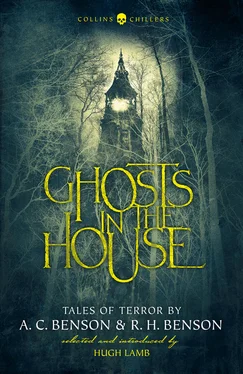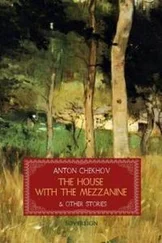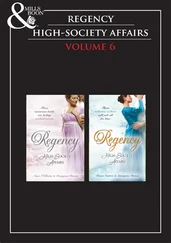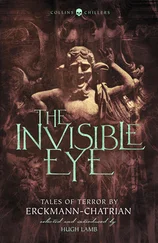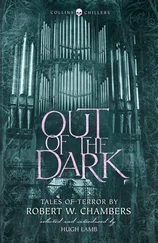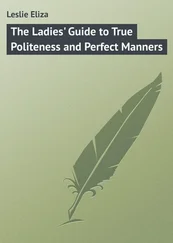Like Fred, Arthur and Hugh wrote extensively and sold well. They may not have matched their brother’s output, or achieved his more enduring fame, but he had more time on his hands than they did.
Arthur churned out his books of essays and a few novels; he edited Queen Victoria’s letters for publication; and he produced books of Benson family autobiography and biography, including a book each on his father, Hugh Benson and Maggie Benson.
Hugh wrote books on religious practice and thought; some novels, both historic and prophetic, with lots of religion included; and contributed to the Benson catalogue of family history. For a line which died out, the Bensons left behind a vast amount of personal history which makes interesting reading now. There is certainly much left unwritten which would make even more interesting reading; and it should never be forgotten that the Bensons were supreme self-publicists – we read what they wanted us to know and nothing more, true or not.
And all three of them wrote ghost stories. Their individual aims in writing them, however, varied enormously. Fred wrote his for money and entertainment. Arthur wrote his, in the main, as allegorical tales for his pupils, and kept fairly private some darker stories that were only published after his death. Hugh wrote his as glorifications, often unctuous, of his new Catholic faith. That Arthur and Hugh managed to produce such good material despite all this speaks worlds for their talent.
The family and its background provided much overt influence. For instance, all three brothers wrote of rooms in towers: Fred in the title story of his 1912 collection, Arthur in ‘The Closed Window’, and Hugh in ‘Father Maddox’s Tale’. The tower room was a feature of their home in Truro, Lis Escop, when Edward Benson was Bishop of Truro from 1877 to 1882.
Fred Benson was by far and away the most successful ghost story writer of the three and was not interested in moral lessons or religious tracts. He wrote his stories to frighten, and said so. Yet Arthur’s and Hugh’s stories contain some pretty scary stuff, and if Arthur wrote his for his pupils, they must have had a few nasty moments when he read them aloud. Hugh seems to frighten us almost in spite of himself at times.
Arthur had met M.R. James in 1873, when they were both pupils at Temple Grove School, East Sheen (the setting for MRJ’s ‘A School Story’), and they stayed close friends until Benson’s death. Arthur would sit in on James’s Christmas readings of his stories, with friends such as Herbert Tatham, E.G. Swain and Arthur Gray, all of whom also wrote ghost stories. James’s influence on this genre is quite remarkable; it is possible to trace his influence in the work of over sixty writers.
While neither Benson nor James overtly copied each other, there are some interesting parallels. In ‘The Uttermost Farthing’, Benson introduces a phantom that could have stepped from the pages of James. ‘The Red Camp’ bears an interesting resemblance in tone to MRJ’s later work ‘A Warning to the Curious’, where archaeological treasure hunting brings a grim reward.
Arthur’s published ghost stories were written to entertain his pupils, and collected into book form later. One of his Eton pupils, E.H. Ryle, has described a typical Benson reading:
We used to assemble in his dark and deserted study … exactly at the appointed moment [Benson] would emerge from his writing room … He would turn up the light in a green-shaded reading lamp on a little table, bury himself in his great, deep armchair … and then, in a low, conversational tone of voice, he would narrate an absorbing tale. I loved those Sunday evenings. The darkened room, the little pool of light … a silence which could be felt, the blurred outline of the huddled-up figure of the big man, the quiet, even flow of words …
Considering the still sharp scenes of terror in some of those stories, that ‘low, conversational tone’ of Benson must have caused quite a few nightmares! These stories for his pupils were collected into two volumes, The Hill of Trouble (1903) and The Isles of Sunset (1905).
Another book of A.C. Benson stories had quite a different origin. When Arthur joined in James’s reading sessions, he would contribute one or two himself. We know of at least one by name, ‘The House at Trehele’, which Benson read out in 1903. When Arthur died, E.F. Benson went through his papers and came across a file of ghost stories. He quite liked the look of two of them and duly got them published by one of his own publishers, Hutchinson, in January 1927 (under the dreadfully nondescript title Basil Netherby , which might explain the volume’s neglect since). The title story was a renamed ‘The House at Trehele’. There is no record of what happened to the others.
Arthur Benson suffered from extraordinary dreams all his life, extraordinary both in their content and the clarity with which he recalled them, and described some in his diary. He dreamed of an execution: ‘A man with an axe cut pretty deep into [Lord Morton’s] neck. I saw into the cut, it was like a currant tart.’ Then he had this vision some years later:
… a terrible dream of the hanging of some person nearly related to me at Eton; the scaffold, draped with black, stood in Brewer’s Yard; and I can’t describe the speechless horror with which I watched little black swing-doors in it push open at intervals, and faces look out. The last scene was very terrible … the prisoner stood close to me … I could see his face twitch and grow suddenly pale. When the long prayers were over, he got up and ran to the scaffold, as if glad to be gone. He was pulled in at one of the swing-doors – and there was a silence. Then a thing like a black semaphore went down on the top of the scaffold – (which was nothing but a great tall thing entirely covered with black cloth) – and loud thumps and kicks were heard inside, against the boards, which made me feel sick.
There is an odd little essay by Benson in his book Escape (1915) which merits a mention. In ‘The Visitant’ he tells of a recurring vision of a house and its occupants. He can see them and the rooms with great clarity, but is unable to see past some doors or into the hall or passage. It is not sinister in itself but it does bear an uncanny resemblance to the recurring dream in E.F. Benson’s ‘The Room in the Tower’. Fred was not averse to the occasional lifting of his brother’s material, as with The Luck of the Vails .
E.H. Ryle recalled that ‘shortly after its publication in 1903 I started to read The Luck of the Vails , by E.F. Benson, my Tutor’s brother. I wondered why it seemed familiar, and then it flashed upon me that the story, no doubt in a less elaborate form, had been spun out to us on the ten or eleven Sunday evenings of (I think) the winter half of 1899–1900. I imagine that A.C.B., after realising the pleasure it had given to a youthful audience, passed on the plot to E.F.B. – but I write subject to correction.’
It would seem that Arthur Benson wrote no more ghost stories for publication that we know of. He did write a mildly interesting novel, The Child of the Dawn (1912), dealing loosely with reincarnation. Its significance here lies in its introducing, in the midst of the hero’s wanderings in the afterlife, the unnamed figure of Herbert Tatham, a fellow ghost story writer of Benson, and his greatest friend, who had died in 1909, and to whom the novel was dedicated. According to Hugh Macnaghten, Eton Vice-Provost at the time of Arthur’s death, Herbert Tatham suggested the plot of ‘The Gray Cat’ to Benson.
It was Arthur’s ‘pupil’ stories that inspired Hugh Benson to try his luck at ghost story writing, albeit of a much more different sort. He records that he started writing the stories in The Light Invisible (1903) in the summer of 1902 and that they were of a semi-mystical and imaginative nature. They were that all right, but more besides. Purporting to be the narratives of an old priest and the writer himself, the fifteen tales vary wildly from genuinely creepy stories, such as ‘The Traveller’, to quite unpalatable religious maunderings. One story, which I have not included here, invites us to witness a spiritual being pushing a child under a horse and cart as evidence of God’s love for humanity. If Benson’s religious convictions led him in this direction, we can only be grateful he never wrote any more stories for that volume.
Читать дальше
